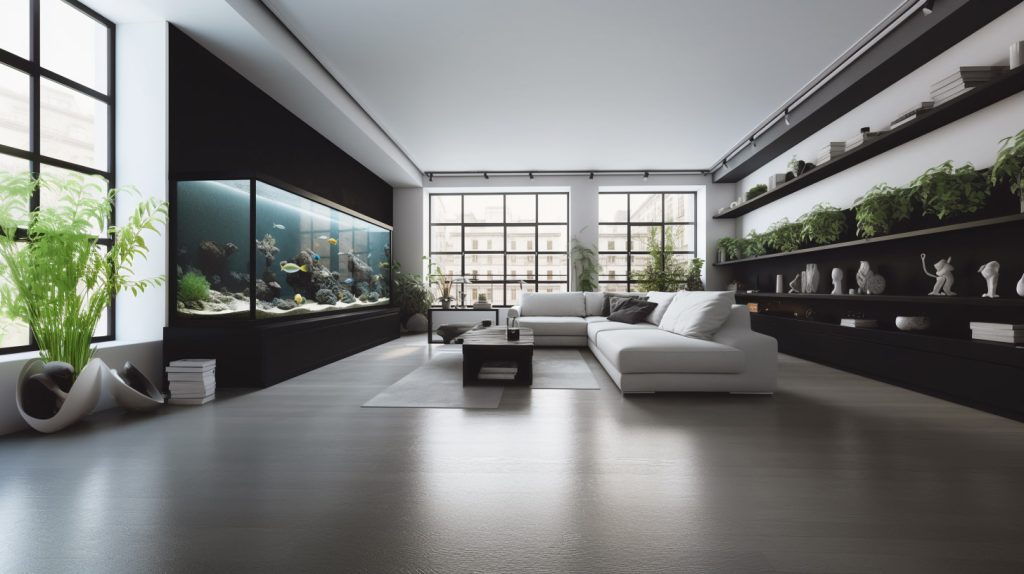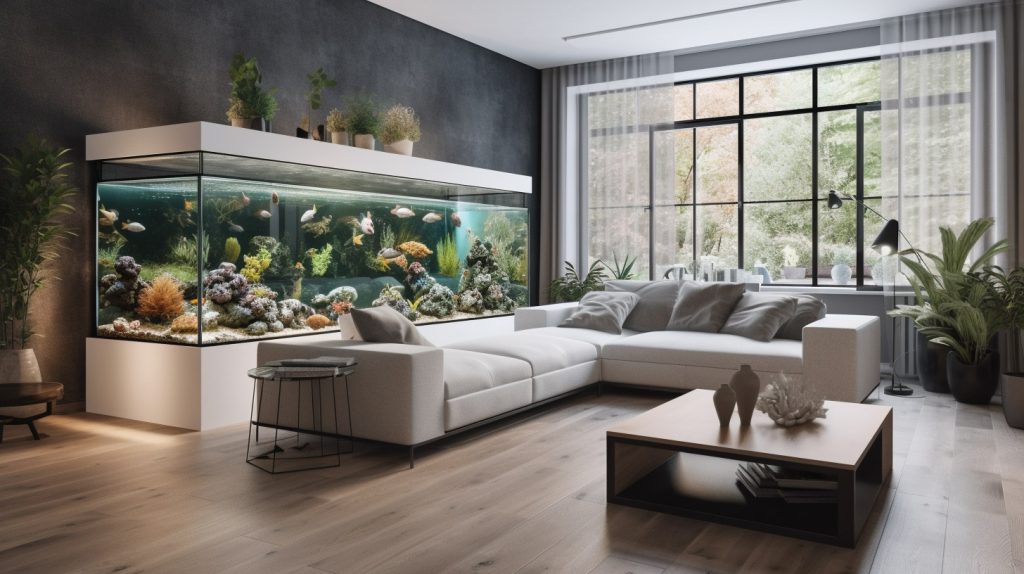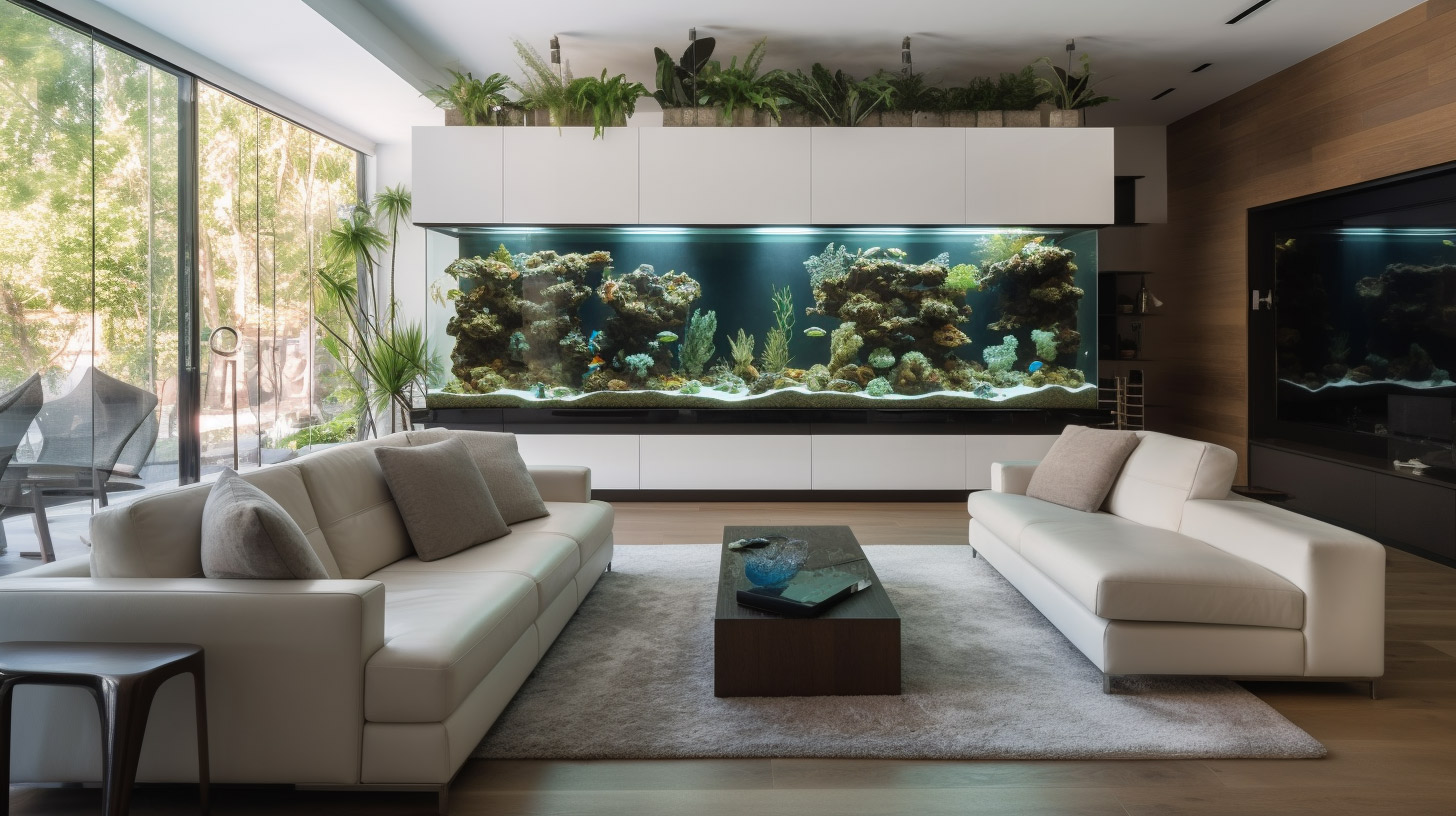Are you considering adding a touch of nature to your home by bringing in aquatic or terrestrial life? Aquariums and terrariums are two popular options that allow you to create a miniature ecosystem within the confines of your living space. Both choices have their unique advantages and disadvantages, and it’s essential to understand them before deciding which one is more suitable for your home. In this comprehensive article, we will explore the features, benefits, drawbacks, and considerations associated with aquariums and terrariums. By the end, you’ll have a clearer understanding of which option aligns better with your preferences and living environment.
Introduction
Bringing the beauty of nature into our homes has become increasingly popular in recent years. Aquariums and terrariums offer an opportunity to create a captivating and vibrant environment while providing a sense of tranquility. However, before diving into the world of aquatic or terrestrial ecosystems, it’s important to assess which option best suits your needs. Let’s explore the characteristics of both aquariums and terrariums and delve into the advantages and disadvantages they offer.
What is an Aquarium?
An aquarium is a controlled aquatic environment that replicates the conditions found in lakes, rivers, or oceans. It typically consists of a glass or acrylic tank, water, aquatic plants, and various species of fish or other aquatic creatures.

Components of an Aquarium
An aquarium comprises several essential components, including:
- Tank: The tank serves as the enclosure for the aquatic life and holds the water and accessories.
- Water Filtration System: This system maintains water quality by removing impurities and providing a healthy environment for the inhabitants.
- Lighting: Proper lighting is crucial for the growth of aquatic plants and the overall aesthetics of the aquarium.
- Decorations: Decorative elements, such as gravel, rocks, driftwood, and artificial plants, enhance the visual appeal of the aquarium and provide hiding spots for the aquatic inhabitants.
- Heating and Cooling Systems: These systems regulate the water temperature to ensure the well-being of the aquatic organisms.
Benefits of Having an Aquarium
- Visual Appeal: An aquarium adds a captivating and dynamic element to any room, creating a visually stunning focal point.
- Stress Reduction: Watching fish gracefully swim and listening to the sound of water can have a calming effect on the mind and help reduce stress levels.
- Educational and Therapeutic Value: Aquariums offer educational opportunities, especially for children, by providing insights into aquatic ecosystems and the behavior of various fish species. Additionally, some studies suggest that aquariums can have therapeutic benefits by reducing anxiety and blood pressure.
- Positive Atmosphere: The vibrant colors and movement within an aquarium create a lively and positive atmosphere in the surrounding space.
- Social Interaction: Aquariums can serve as conversation starters and provide a shared interest for family members and guests.
Drawbacks of Having an Aquarium
- Maintenance: Aquariums require regular cleaning, water testing, and maintenance of equipment to ensure the well-being of the aquatic life.
- Initial Setup Cost: Setting up an aquarium can be expensive, considering the cost of the tank, filtration system, lighting, and other necessary equipment.
- Time Commitment: Maintaining an aquarium demands regular time investment for feeding the fish, monitoring water conditions, and performing necessary maintenance tasks.
- Noise: Some aquarium equipment, such as filters or air pumps, can produce audible sounds that may be bothersome to some individuals.
Considerations for Setting Up an Aquarium
- Tank Size: The size of the tank depends on the space available and the number and type of fish you plan to keep.
- Compatibility: Not all fish species can coexist peacefully in the same aquarium. Researching the compatibility of different species is vital to maintaining a harmonious ecosystem.
- Water Parameters: Different fish species have specific requirements for water temperature, pH levels, and hardness. Ensuring that these parameters are within the appropriate range is crucial for the well-being of the aquatic life.
- Maintenance Routine: Establishing a regular maintenance routine is essential for the long-term health of the aquarium. It involves cleaning the tank, testing water quality, and monitoring the overall condition of the aquarium.
What is a Terrarium?
A terrarium is a sealed or partially enclosed container that simulates a miniature terrestrial ecosystem. It typically consists of plants, soil, and sometimes small animals or insects, creating a self-sustaining environment within its confined space.

Components of a Terrarium
A terrarium comprises several essential components, including:
- Container: The container can be made of glass or acrylic and may have a lid to regulate moisture levels.
- Soil: A suitable soil mix provides nutrients and serves as the growing medium for the plants.
- Plants: The selection of plants depends on the desired aesthetics and the environmental conditions within the terrarium.
- Decorative Elements: Rocks, pebbles, moss, and miniature figurines can be used to enhance the visual appeal of the terrarium.
Benefits of Having a Terrarium
- Low Maintenance: Terrariums require minimal maintenance compared to aquariums. Once established, they can be largely self-sustaining, requiring little intervention.
- Indoor Greenery: Terrariums bring the beauty of nature indoors, even in spaces with limited access to natural light.
- Air Purification: Plants within the terrarium act as natural air purifiers, removing toxins and improving air quality in the surrounding area.
- Therapeutic Effects: Being around plants has been shown to reduce stress levels, improve mood, and increase productivity.
- Educational Value: Terrariums provide an opportunity to learn about different plant species, their growth habits, and the interdependence between plants and the environment.
Drawbacks of Having a Terrarium
- Limited Animal Options: Unlike aquariums, terrariums have limited options for housing animals or insects. They are primarily focused on plant life.
- Potential Pest Issues: Insects or pests may sometimes find their way into the terrarium, which can affect the plants’ health.
- Lack of Aquatic Life: If you are specifically interested in aquatic organisms, a terrarium may not fulfill that desire.
Considerations for Setting Up a Terrarium
- Light Requirements: Selecting plants that thrive in low-light conditions is important if your terrarium has limited access to natural light.
- Humidity Control: Depending on the plant species, the terrarium may require specific humidity levels. The choice of container and lid design can help regulate moisture levels.
- Plant Selection: Researching suitable plant species that can thrive in the confined space of a terrarium is crucial. Consider factors such as growth habits, light requirements, and compatibility with other plants.
- Watering Routine: Overwatering or underwatering can adversely affect the plants in the terrarium. Establishing a watering routine based on the specific needs of the plant species is essential.
Comparison between Aquariums and Terrariums
Now that we have explored the characteristics, benefits, and drawbacks of both aquariums and terrariums, let’s compare them based on several key factors:
- Maintenance: Aquariums generally require more maintenance compared to terrariums due to the need for water quality monitoring, cleaning, and equipment upkeep.
- Aesthetics: Both aquariums and terrariums offer visually appealing displays, but aquariums often have the advantage of movement and the vibrant colors of fish.
- Variety of Life Forms: Aquariums provide a wide range of aquatic life forms, including fish, invertebrates, and plants. Terrariums primarily focus on plant life, with limited options for small animals or insects.
- Cost: Setting up an aquarium can be more expensive initially due to the cost of the tank, filtration system, lighting, and other equipment. Terrariums generally have lower setup costs.
- Space Requirements: Aquariums require more space due to the size of the tank and the need for additional equipment. Terrariums can be more compact and suitable for smaller living spaces.
- Personal Preferences: Personal preferences play a significant role in determining whether an aquarium or a terrarium is more suitable. Some individuals may be drawn to the peaceful ambiance of an aquarium, while others may prefer the low-maintenance greenery of a terrarium.
Conclusion
In conclusion, both aquariums and terrariums offer unique advantages and create captivating environments within your home. Aquariums provide a dynamic and visually stunning display with a wide range of aquatic life forms, while terrariums offer low-maintenance greenery and can improve air quality. Consider factors such as maintenance requirements, desired aesthetics, available space, and personal preferences when deciding which option is more suitable for your home. Remember to research specific species’ needs and invest the time and effort necessary to ensure the well-being of the aquatic or terrestrial life within your chosen ecosystem.
FAQs (Frequently Asked Questions)
Can I keep both fish and plants in the same enclosure?
While it is possible to create a habitat that accommodates both aquatic life and plants, it requires careful planning and consideration of the species’ compatibility and environmental requirements.
Are there any specific fish species suitable for beginners in aquarium keeping?
Yes, several fish species, such as guppies, bettas, and tetras, are considered beginner-friendly due to their hardiness and ease of care.
Can I use artificial plants in a terrarium instead of live plants?
Yes, artificial plants can be used in terrariums for decoration purposes. However, live plants contribute to the overall health of the ecosystem by improving air quality and creating a more natural environment.
Do terrariums require natural sunlight?
While some terrarium plants thrive in direct sunlight, many can adapt to lower light conditions. If natural sunlight is limited, you can use artificial lighting to provide the necessary light spectrum for plant growth.
How often should I clean my aquarium?
Regular cleaning of the aquarium is essential to maintain water quality and the well-being of the aquatic life. It is recommended to perform partial water changes and clean the tank every 1-2 weeks, depending on the size of the tank and the number of inhabitants.


1 Comment